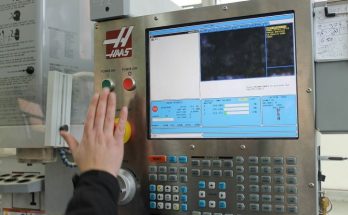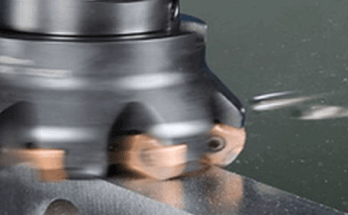Adaptive Control in CNC : What is it, and how does it work ?
Adaptive control in CNC machines is the continuous monitoring of cutting load and automatic adjustment of cutting feed rate based on the load.
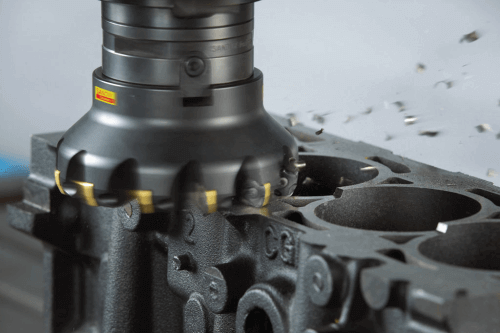

During machining, the cutting load may suddenly increase because of local hard spots in castings or variation in the height of raw material. The load also increases as the tool wears out. This is how adaptive control works: You set a normal load level for an operation. If the load increases, the feed rate reduces to bring the load back to the normal level. If the load reduces (e.g., because the raw material is less than what the program was written for, or there’s a gap in the casting), the feed rate increases.
You typically set these parameters for adaptive control:
– The normal spindle load in the operation
– Lower and Upper limits of feed rate. The adaptive control logic will increase or reduce the feed rate within this range, and not go beyond the range.
– An ultimate power level. If the load increases to this level in spite of the feed rate being reduced to its lowest set value, the machine generates an alarm or stops. All values are set as percentages. The normal load is a percentage of the spindle motor’s rated max. load, the ultimate load is a percentage of the normal load. Feed rate limits are percentages of programmed feed rate.
The feature is usually an option on controllers, and not all controllers may have it. Adaptive control has been around for a few decades, and is not some hot new technology. I’ve used it way back in 1985, as a young lad of 25. I used to program a Mitsui Seiki HR7 HMC with a Fanuc 6MB control, that had adaptive control. The parameters were programmed through G codes in the program. Today’s controllers allow the parameters to be entered through the screen interface itself.
Disclaimer: This info is based on my own experience of using adaptive control in CNC machines 3 decades ago. I checked on the web and could not find any current info on it. I also asked around, and found that very few people actually use it. So pardon me for any goof ups here, and please feel free to add any more knowledge that you have as a comment, so I can add it to this post.

Transform production and profits dramatically, in just a few months.
With a CNC machine monitoring system.
Etc
The pest in my park
On days that I don’t cycle to work I take the public transport, and end up not getting any exercise. My exercise on such days is a walk in a park about a km from home – not as good as my 25 km cycle commute to work, but better than nothing. It’s not a popular park because it is small (a circuit around the walking track is just 250 m, so you’ve got to walk 4 rounds for a km), and it has more brownery than greenery.
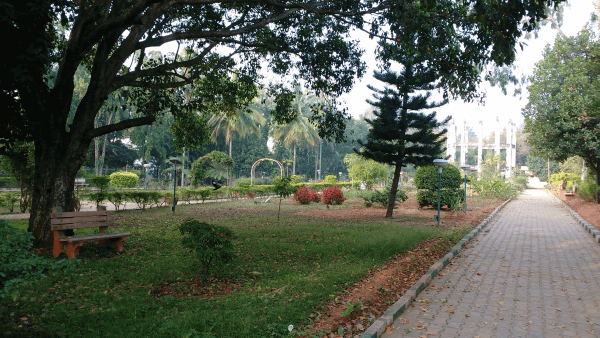

I however prefer it to a couple of other parks near my home because it is not popular. The other parks have pedestrian traffic jams, and you’ve got to dodge around people. Even worse, every few meters you meet someone you know from the locality, and have to stop and talk to them for a few minutes. There’s just a handful of people who walk there, and it’s very popular with birds – mynahs, coucals, parakeets, babblers, hoopoes, crows, sunbirds.


The park has one very big pest, who’s the gardener. This guy is convinced that the garden exists because of him, but I think it’s in spite of him. Although there are no pests other than him, from time to time he gets into the mood of spraying pesticide over all the foliage. This of course leaves a residual smell for a few days and ruins my walks – I keep thinking I’m breathing in instant death with every breath I take .
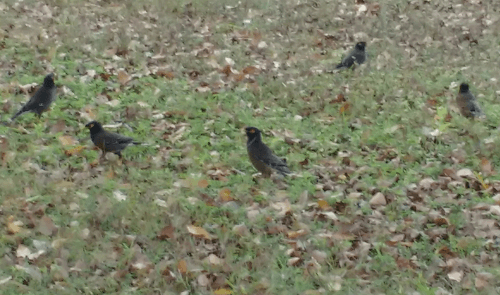
A conference of mynahs in progress
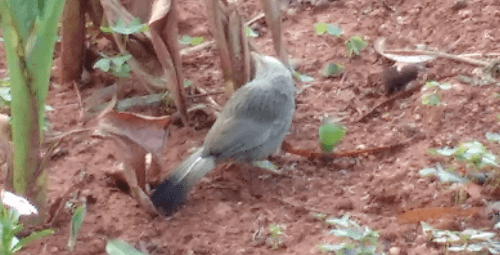
A babbler checking to see what the commotion is all about This morning I saw a group of mynahs having a noisy conference on the ground, with a couple of babblers adding their unsolicited and unwelcome advice. I wonder what the collective noun for a group of mynahs is (like a pride of lions or a herd of cattle) ? If there is no word as yet, maybe it should be a conference of mynahs ?
Some collective nouns for animals are really weird: like a murder of crows, a lamentation of swans, or a bastard of cats. So if a cat says “Hi, you bastards” to a bunch of other cats he’s just saying “Hi, you guys” and is not going to be instantly butchered by the bastards . (You can’t imagine how good it feels to be able to use the word bastard repeatedly, legitimately, and not be accused of using unparliamentary language in a technical blog ). Here’s the whole list of collective nouns for animals.
| Interested in a Plug-and-play Industry 4.0 system ? See LEANworx, from our group company. |  |

